
An autogyro, or gyroplane, is a class of rotorcraft that uses an unpowered rotor in free autorotation to develop lift. While similar to a helicopter rotor in appearance, the autogyro's unpowered rotor disc must have air flowing upward across it to make it rotate.

The Pitcairn Mailwing family was a series of American mail carrier and three-seat sport utility biplane aircraft produced from 1927 to 1931.

The Buhl-Verville CA-3 Airster, was a utility aircraft built in the United States in 1926, notable as the first aircraft to receive a type certificate in the US, issued by the Aeronautics Branch of the Department of Commerce on March 29, 1927. It was a conventional single-bay biplane with equal-span unstaggered wings and accommodation for the pilot and passengers in tandem open cockpits. Marketed for a variety of roles including crop-dusting, aerial photography, and freight carriage, only a handful were built, some with water-cooled engines as the CW-3, and others with air-cooled engines as the CA-3. One CA-3 placed second in the 1926 Ford National Reliability Air Tour.
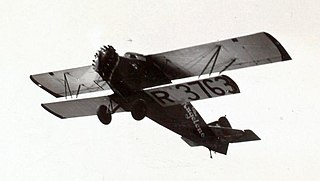
The Buhl AirSedan was a family of American civil cabin sesquiplane aircraft developed and manufactured by the Buhl Aircraft Company in the late 1920s. One example completed the first transcontinental non-stop roundtrip flight, made in 1929 by the CA-6 Spokane Sun-God, and the first Pope to have flown did so in a Buhl Airsedan.
Buhl Airster may refer to either of two aircraft designed by the same manufacturer but otherwise unrelated:

The Buhl CA-1 Airster was a sports airplane developed in the United States in 1930. It was a conventional low-wing cantilever monoplane with fixed tailwheel undercarriage and an open cockpit for the pilot.

The Buhl LA-1 Bull Pup was a light sports airplane developed in the United States in 1930. It was a mid-wing wire-braced monoplane with fixed tailskid undercarriage and an open cockpit for the pilot. Buhl developed the Bull Pup as a cheap aircraft through which the company hoped to remain in business as the onset of the Great Depression was felt. However, as the economic situation worsened, it became evident that there was no demand for even such a basic aircraft; when production ceased in 1932, all aircraft still in stock were sold off at half price as the company folded.
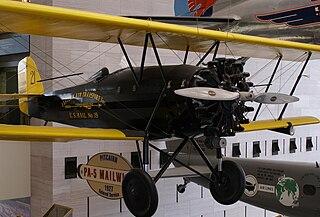
Harold Frederick Pitcairn was an American aviation inventor and pioneer. He played a key role in the development of the autogyro and founded the Autogiro Company of America. He patented a number of innovations relating to rotary wing aircraft.

The Cierva C.19 was a 1930s British two-seat autogyro, designed by Spanish engineer Juan de la Cierva. It was built by Avro as the Avro Type 620. It proved to be the most successful and widely produced of the early de la Cierva designs.

The Kellett K-2 was a two-seat autogyro developed in the United States in the early 1930s. Later examples were designated K-3 and K-4 when equipped with more powerful engines. K-3 NC 12691 is seen in the 1934 movie, It Happened One Night.

The Pitcairn PCA-2 was an autogyro developed in the United States in the early 1930s. It was Harold F. Pitcairn's first autogyro design to be sold in quantity. It had a conventional design for its day – an airplane-like fuselage with two open cockpits in tandem, and an engine mounted tractor-fashion in the nose. The lift by the four-blade main rotor was augmented by stubby, low-set monoplane wings that also carried the control surfaces. The wingtips featured considerable dihedral that acted as winglets for added stability.
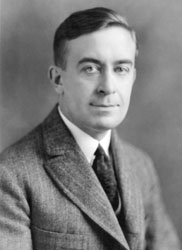
Alfred Victor Verville was an American aviation pioneer and aircraft designer who contributed to civilian and military aviation. During his forty-seven years in the aviation industry, he was responsible for the design and development of nearly twenty commercial and military airplanes. Verville is known for designing flying boats, military racing airplanes, and a series of commercial cabin airplanes. His planes were awarded with the Pulitzer Speed Classic Trophy in 1920 and 1924.
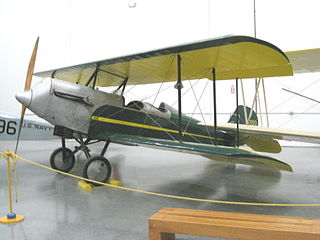
The American A-1 and A-101 were American two and three-seat biplanes of the 1920s.

The Swallow Airplane Swallow is an American-built general purpose biplane of the mid- to late 1920s.

The Stearman C2 was the second aircraft type designed by the Stearman Aircraft company. The aircraft first flew in 1927.

The Pitcairn Aircraft Company was an American aircraft manufacturer of light utility aircraft. An early proponent of the autogyro, the company, later known as the Autogiro Company of America among other names, remained in business until 1948.
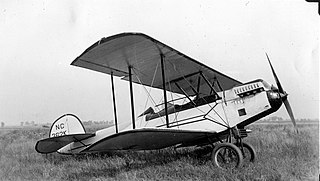
The Parks P-1 was an American three-seat sport biplane that was built in the late 1920s.

Étienne Dormoy was an aeronautical engineer and a designer of aircraft.

The Buhl A-1 Autogiro was an autogyro optimised for air camera work designed and built from 1930. To this end, Etienne Dormoy designed the Buhl A-1, an autogyro with a pusher engine located behind the pilot and camera operator. The Buhl A-1 was the first pusher style autogyro.




















